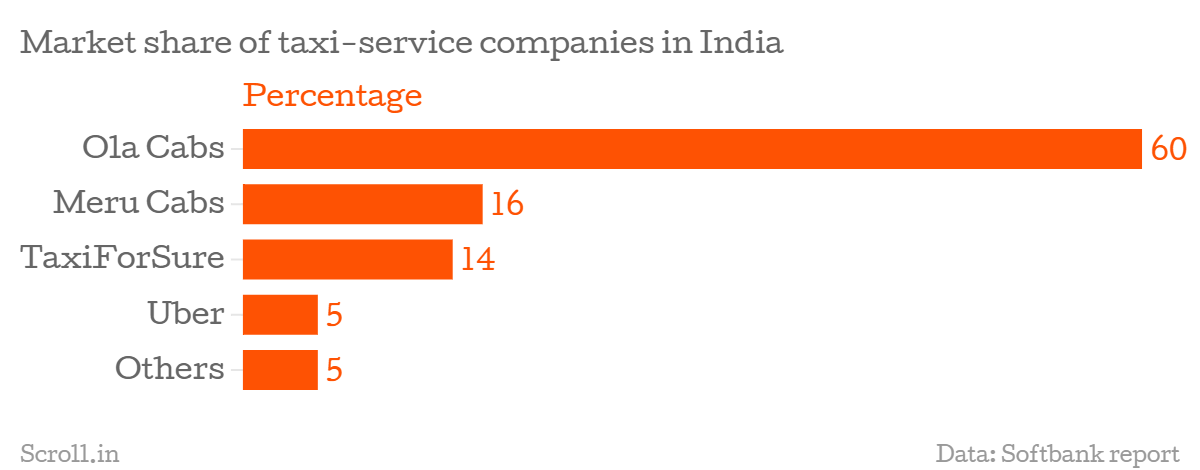The launch of UberGo comes two days after Ola Cabs, India’s answer to Uber and an older entrant in the market, launched a service where one can book an auto rickshaw in Bangalore from its main mobile app. A quick scan through Google News shows that the former got more than 20 more articles written about it than the latter even though it launched two days earlier and arguably both are equally important.
Ola Cabs got funding from Japan’s Softbank on October 28. Ola Cabs said it had raised about Rs 1281 crore in addition to the Rs 250 crore it got, back in July. While these events are significant in the way that it helps Ola Cabs expand its fleet and into other cities, it didn’t get nearly enough attention. It was dwarfed by Softbank’s other investment in Snapdeal, one of India’s largest e-commerce sites. Ola Cabs got a mere mention under the barrage of articles on Snapdeal. Even a mere city expansion from Uber got more press coverage with everyone rushing to try out the service.
Uber on the other hand, had every news organisation at its feet. Firstpost, Wall Street Journal India, Economic Times, NDTV, Business Insider India, and India Today, had an article on the new low cost transportation launched by Uber. These articles aren’t just a republication of a wire report.
On the other hand, when Ola Cabs launched in Nagpur on Monday, November 17, there were just about two stories about it. NDTV, and Business Standard. Both were a republication of a story from the Press Trust of India. If Uber was to launch in Nagpur, it would have gotten a lot more press than Ola Cabs. Everyone hails Uber as the greatest start up that has come in recent times. Uber has no problem with funding and seemingly no problem with generating revenues and recruiting drivers. Only problem it has is the drivers it chooses to hire and keeping its critics at bay. Pando editor, Sarah Lucy wrote a scathing article against Uber that has been doing the rounds on the internet. In India, up until now, a year into its launch, it hasn't faced much criticism, which is great for the company.
Market share

According to a report from lead Softbank, Ola is by far the number one cab-hailing service in India with 60 percent market share. Uber is far behind with a mere 5 percent.
With Uber coming in near last place, is it the Uber who needs the press or the press who needs Uber? Worldwide, Uber has enough going for it. In India, Uber has already expanded into 10 cities since its launch in September of 2013. According to Alexa Rankings, India is already second in terms of visitors to Uber’s website. Overall in India, Uber comes in at third in terms of visitors behind Ola Cabs and TaxiForSure but ahead of Meru Cabs.
With a massive amount of funding in its pocket and throngs of media personnel writing about every step Uber takes and without a major foot wrong in India, Uber deserves all the attention it is getting. More competition means cheaper prices for the consumer. One way to assure that is for the media coverage where it is due and for Uber to keep doing what it does best.










